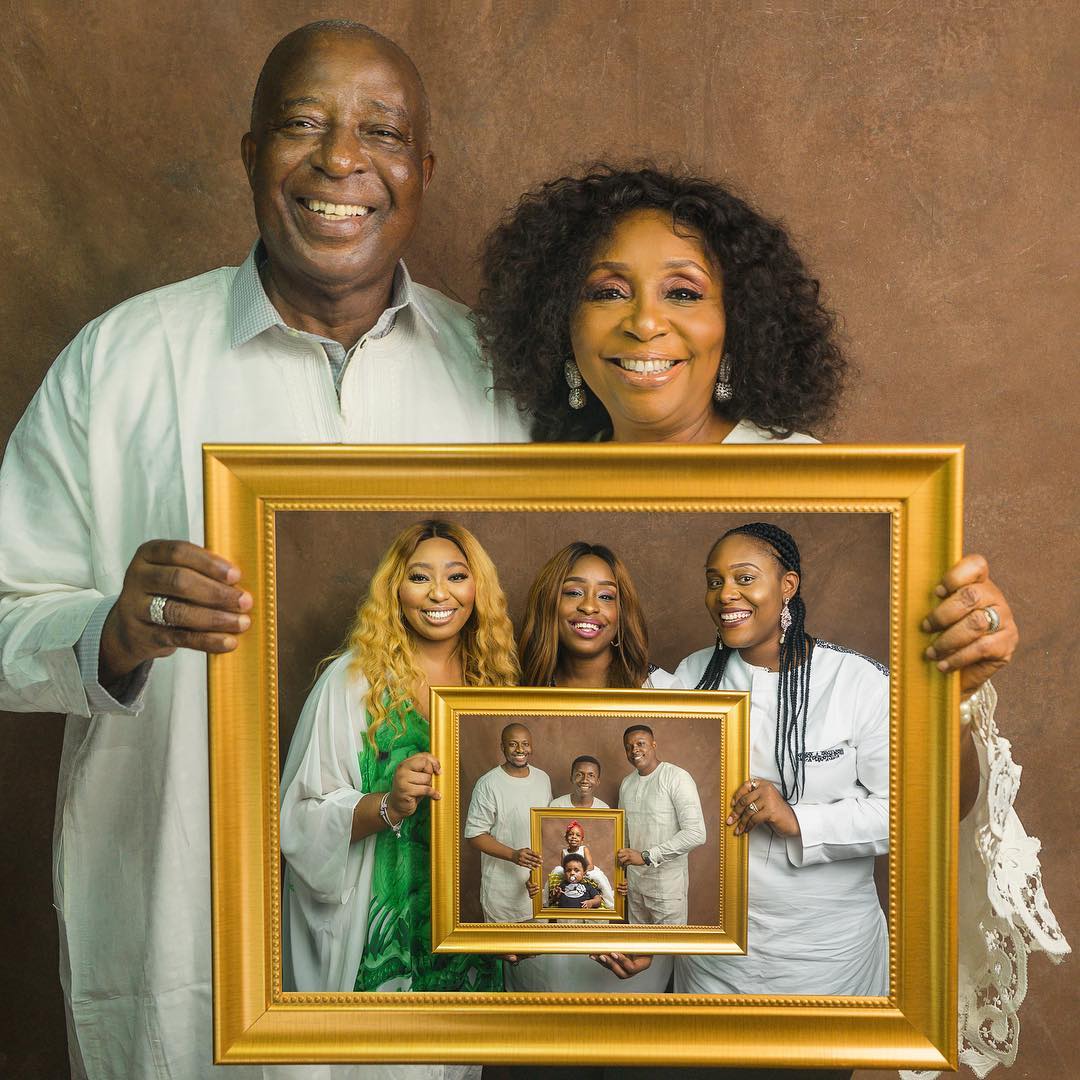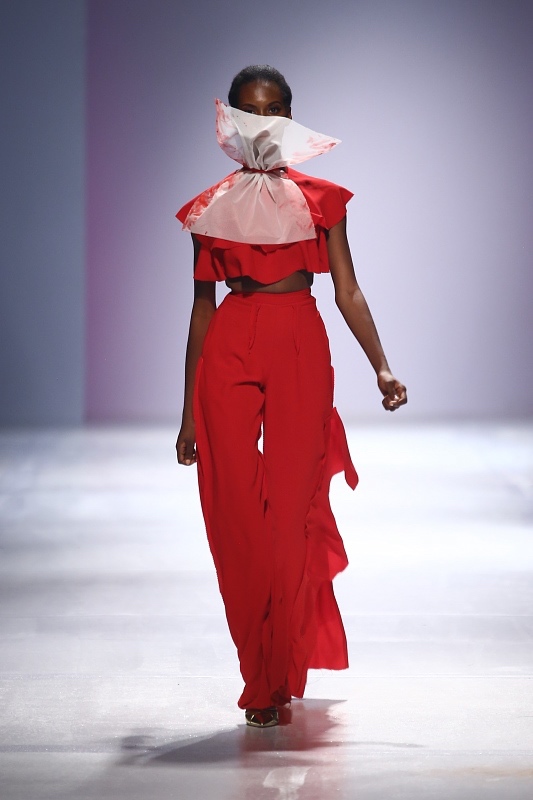FASHION
Latasha Ngwube Launches Plus Size Website
Published
8 years agoon
By
FAB.NG
Latasha Ngwube, a popular lifestyle journalist, has a brand new venture called AboutThatCurvyLife.com, a website dedicated to fashion, beauty, lifestyle and empowerment of the African curvy community. Latasha who began her career at ThisDay Style has gone on to have a successful career spanning the last decade. A lover and advocate of fashion, Latasha knows all too well the stigma faced by the plus-size community and through her empowerment platform ‘About That Curvy Life’, she has decided to fight back by galvanizing an industry of her own, right here in Africa.
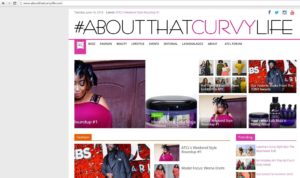
aboutthatcurvylife.com
The project is near and dear to her heart having grown up as a plus size woman and spent the majority of her life in the public eye. She passionately spoke about it, and other related topics like Internet trolls/bullies, the average size of an African woman being 16, plus size men, being healthy although big and many other things. Here’s what she had to say:
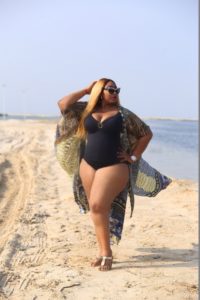
Latasha Ngwube
“In the Efik tribe in Calabar, young girls were sent to fattening huts in preparation for marriage because a big wife was indicative of prosperity and over abundance. Our ideals of beauty have changed significantly during the post-colonization as the Western aesthetics influenced our own perceptions of beauty. The authentic African body type was the curvy one. To show the shift in the mentality, we now equate being bigger with laziness and poor health. Neither are true. A whole group of people cannot be characterized by their appearance alone. All it shows is society’s endemic need to put people into boxes in order to digest them more easily. This categorizing has had a detrimental effect on how we view each other and it’s a mindset we need to reverse urgently.
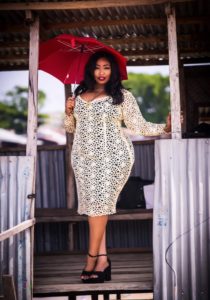
All About That Curvy Life
“The name About That Curvy Life (ATCL) came to me around the time when it officially started in June 2015. The idea of it is something I have toyed with since 2008 when I worked with This Day. I wanted to write a page dedicated to plus size fashion because it was something that, apart from being personal to me, was surprising that we never really ventured towards. I mean, here we were redefining African fashion and we weren’t creating a voice for curvy people on this continent of curvy people?
“So once a month my editor would let me do something on what she called ‘fat girl fashion’. And it wasn’t difficult writing those fashion stories as my interest in plus size models, celebrities and style had been primed as early as the age of 18. The Internet was new here and as soon as I could get my hands on a good connection back then I would research on things like plus size models, fashion, industry pioneers, activists. With my new voice, writing on plus size stories made me want more but I had my limitations and I had to nurse my ideas, bide my time and find the right opportunity.
“Years down the line, still in the media, having moved on to Vanguard Allure, TV hosting and other ventures, I was approached by Konga to be their spokesmodel for their newly created Plus Size fashion category and it was a success with the audience. Younger girls, women who were too timid, girls without self-confidence all asking questions like “How do you do it? Where do you shop? How are you so confident?” I answered as best as I could, encourage and give advice but it unlocked something inside me that had been there the whole time and finally knew the right time had come.
“Still in ATCL, Oye Akideinde sat and brainstormed with me till we had migraines, weeding out what names we thought would work and what sounded plain silly. Next, I started to ask myself, how do you get this thing going and it hit me, Fashion week! Not NYFW but the one for my cause, the annual Full Figure Fashion Week and so I started my research. Then I discovered that another event had also been newly created by top plus size bloggers Chastity Garner and CeCe Olisa, called The CurvyCon.
“American plus size bloggers like Gabi Fresh are living the curvy life and making money off of it, inspiring a lot of people. It’s been more inclusive in America and maybe in the U.K than Africa, which is a huge irony because we are supposedly the monument of the bigger body. So you have plus size models walking New York Fashion Week last year like Sabrina Karlsson, Ashley Graham and Denise Bidot. Marc Jacobs has used people like Beth Ditto, even Project Runway’s last cycle was won by Ashley Nell Tipton, whose plus size collection clinched the winning ticket, a first ever in the show’s history!
“In America, everything is driven by the so-called ‘captains of industry’ and the big corporations are looking at it like it’s the largely unexploited market. You’ve done so much in straight size fashion with diffusion, luxury, couture and then they realise, we haven’t really explored this (plus size market), there’s money to be made here.
“Since I started on this journey, I’ve been fortunate. A lot of existing Nigerian designer’s offer bespoke services. Some of them also go up in size on the rack so I’ve bought an insane amount of things from Tiffany Amber, Lanre Da’Silva, Ejiro Amos Tafiri, Orange Culture, Iamisigo, Sally Bawa, Ituen Basi, The Keeper of the Wardrobe and Zazaii. I actively patronize the fashion industry here. But in saying that, a lot of women don’t know these designers offer plus sizes and that there are designers who are dedicated to the plus-size market like Ma Bello, Tosfa, Couture by Makioba, Cantik Curves and Iro Lagos. I’ve collaborated with some designers and there are still more projects we have in the works.
“I know some brands that are coming up, I’ve been approached times without number. I have a friend that is doing an active wear line targeted at plus-sizes entering the market soon. They are not as many as I would like, but it is a step in the right direction. Internationally, there’s a million and one. They have the Monif C, Torrid, AdditionElle, Lane Bryant, Ashley Stewart, Eloquii and much more. They are lucky because they have people who have a vision and are creating mass appeal and they are pumping billions into the industry to be able to make a viable commercial product. South Africa also has a couple of high street stores that create clothes at the mass level. They are lucky too, we’re still waiting for that to happen.
“Why don’t we have plus size designers in Africa yet? Why don’t we have the plus-size street stores in Africa, what are they waiting for? We have the spending power yet people are ordering these clothes online but why are they not here in brick and mortar on African soil. Why are we trying to have our own runway shows when we should be included in these larger shows? We would celebrate and educate more people show them how to live that perfect life within the bodies that they were given and if they decide to change their bodies that’s fine too
“All I see on the internet is just trolls in the comments section calling people fat, unhealthy, ugly and shapeless and it’s so funny because you have mothers, aunts, sisters, in most families on this continent that are gorgeous and yet plus size. Do you troll your sister, your aunt or your mum? Why are we not more accepting? It’s shocking to me how unaccepting we are of who we are as people. And people go under the guise of ‘Oh! We are only speaking out of concern for your health.’ Lies! Who you epp?! When did you care so much about someone’s health? Where have you been asked to donate to save a fat persons soul?” To the naysayers calling plus size people unhealthy and lazy, send me an email let’s talk about it. My email is here [email protected]. You want to talk, then talk but give me something constructive. Don’t bash or troll people. If you feel we are promoting an unhealthy lifestyle, no problem. I’ll give you more reasons why we are not.
“There’s a lovely quote a friend of mine, Zandile said, “The media can’t change how you see things but it can change the way you think about things.” I can’t go into every Nigerians mind and change how they see a curvy person, but I can change the way they approach the topic. I can let them know not every large person is unhealthy or lazy, not every large person would never amount to anything. Even in my life it’s my goal to be fit, I’ve never wanted to be skinny. I love curves but I work out, take walks, do sit ups, planks, I’m eating healthier so I can live longer but just because I appear to be heavier than you are doesn’t mean I’m going to die before you. You could walk outside right now, you’ve never eaten rice in the last seven years because you are afraid of 2kg of fat and then get killed by a bus. We are promoting a healthy lifestyle; we’re accepting first, we are empowering, and then when you feel good about yourself, everything will fall into place. That’s our belief.
“We (ATCL) have a lot of amazing campaigns, collaborations, events and mixers lined up. We had a campaign shoot for Pop Up Plus, which is a quarterly live style market for plus size women and in that shoot we wore pieces from Ejiro Amos Tafiri. Recently, I saw another shoot of the same Ejiro Amos Tafiri outfit by Grey Velvet Boutique and all the models seemed to be somewhere between size 4 and size 6. We did that shoot before them but they completely mimicked our style but we’re gracious about it. I would like to believe we inspired that shoot. So who says you can’t draw inspiration from ‘Fatshion’. I see cute things on my friends and I’m like ooh! I love that I’m going to do something or style something just like that. If you love fashion, you love fashion. A great dresser is a great dresser. I don’t see why ‘straight sized’ people can’t come to the website and enjoy all that we have to offer. You are welcome, it’s for everyone so please visit.
“We are not limiting this to Nigeria, this conversation is Pan African, it’s for an entire continent. So expect to see ATCL mixers in Ghana, Kenya, S.A coming soon. Expect campus drives because we are in touch with people who are doing pageants and other things. We are going to be everywhere; we’re going to make people think differently about this subject. We’ve been recognized by so many international bloggers about what we are doing so I’m sure we are on the right track. There’s no doubt about it, this is here to stay and grow. The ATCL movement is about empowerment in general for males and females. I know some women who love men with a chub and good-looking men who are on the chubby side. They dress well, they are clean, they are active and they are successful. No one gives them grief, why are they giving the women grief? But a male friend recently said to me, “It’s the women who give other plus size women grief.” Right now sexy is defined by washboard abs and not everyone is going to have washboard abs, deal with it. So yes we are more than just fashion. We are about lifestyle, healthy choices, career, love, relationships and success in every sphere of your life.
ATCL Editors & Writers
“We are looking for people we can hire as contributors, writers, we want to hear your stories and we want people from all spheres of lifestyle spectrum. Fashion, food, travel, relationships, beauty, hair, we want you to come. We don’t want you to say there was no opportunity, or this is for a certain plus size girl or for popular girls. No, it’s not about that, it’s for everyone. Just come on board, go to the website, read, tell us what you like, tell us your feedback, we want to hear from everyone. We are here to stay so we are serious about what we do. There’s some part of the site that’s really dear to me which is a chat forum where people can come in and discuss various topics multiples times a day. It’s a safe space you can share and connect with people on any kind of topic. We are looking forward to people learning, hearing from other people, knowing that they are not alone.
about that curvy life bellanaija june2016Screen Shot 2016-06-13 at 21.22.12_
“In such a time of difficulty for the country, ATCL is encouraging body positivity and a healthy attitude to both body and mind. Rarely do we go out of our way to build up and support but ATCL wants to promote an atmosphere of love, acceptance and above all tolerance. It’s no small feat but if there’s anybody who can make it happen, it’s the audacious Latasha Lagos.”
Follow the movement
Website: AboutThatCurvyLife.com
Twitter: @latashangwube
Instagram: @atclstreetstyle, @aboutthatcurvylife
FASHION
Suit Up & Stand Out: How To Wear A Head-Turning Suit In 2024
Published
6 days agoon
July 20, 2024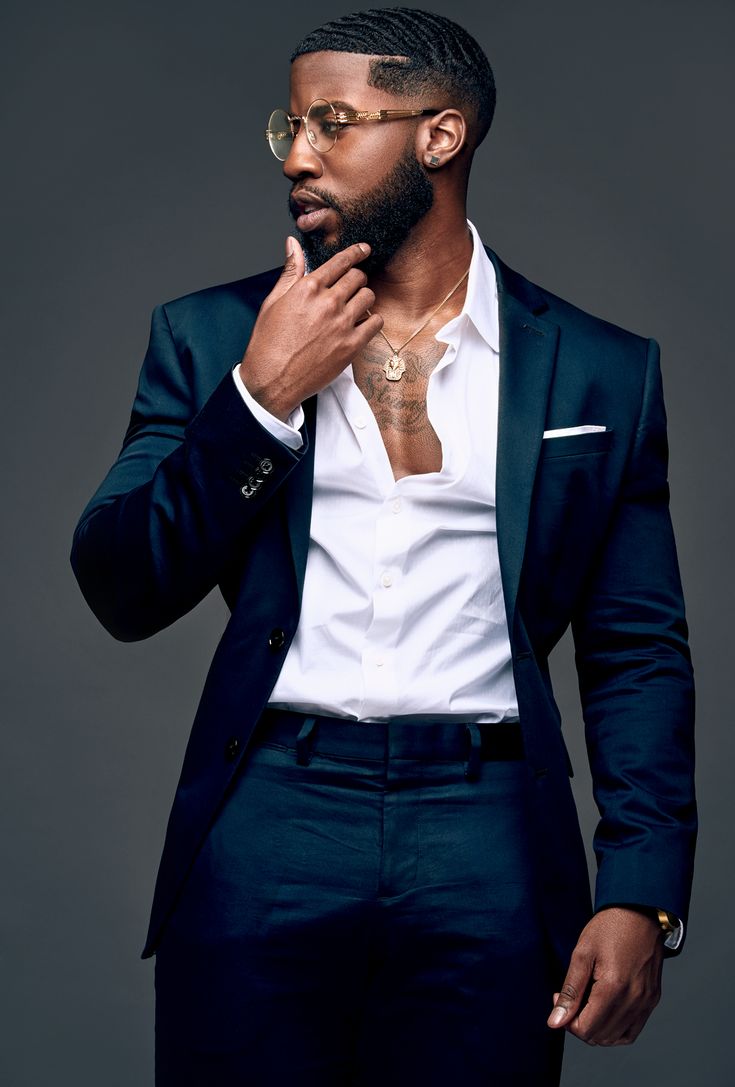
The classic suit remains a timeless symbol of sophistication and style even in 2024. But in the ever-evolving world of fashion, even the suit needs a refresh to stay on top of its game.
So, how do you wear a suit in 2024 that not only commands respect but also turns heads? Here are some key elements to consider:
1. Fit is King (and Queen)
A well-fitting suit is the cornerstone of any head-turning look. It should flatter your body type without being too baggy or constricting. Here’s a breakdown for a modern fit:
-
Jacket: The shoulders should sit comfortably without bunching or tightness. The sleeves should reach the base of your thumb with your shirt cuff showing slightly. The jacket should hug your torso without feeling restrictive, and the back should have a clean line without pulling or bunching.
-
Trousers: Gone are the days of baggy suit pants. Opt for a slimmer, tapered leg that skims your calves without clinging. The trousers should sit comfortably at your waist, and the break (the fold where the pants meet your shoes) should be minimal or nonexistent.
2. Embrace the Modern Silhouette
The classic suit gets a modern update in 2024 with a focus on clean lines and a slightly slimmer silhouette. Here’s what to keep in mind:
-
Higher armholes: Compared to traditional suits, the armholes on modern jackets sit slightly higher, creating a cleaner and more streamlined appearance.
-
Fitted chest: While still allowing for comfortable movement, the chest area of the jacket should have a more fitted look compared to looser styles of the past.
-
Lower waist: The modern suit jacket tends to have a slightly lower waistline, creating a more elongated and contemporary look.
3. Fabric is Fantastic
The fabric you choose for your suit plays a significant role in both aesthetics and comfort. Here are some popular options for 2024:
-
Lighter fabrics: As comfort takes centre stage, lighter fabrics like linen and cotton blends are gaining popularity. These are perfect for warmer weather and offer a more breathable feel.
-
Textured fabrics: For a touch of visual interest, consider textured fabrics like wool blends with a subtle texture. This adds a bit of personality without going overboard.
-
Bold colours (if you dare): While classic navy, charcoal, and black remain reliable choices, 2024 sees a rise in bolder colour options. Think rich burgundy, olive green, or even a deep teal for those who like to push boundaries.
4. Pattern Play
Patterns can add a touch of personality and visual interest to your suit. However, moderation is key in 2024. Here are some tasteful ways to incorporate patterns:
-
Subtle pinstripes: A classic and timeless choice, pinstripes add a touch of sophistication without being overly flashy.
-
Windowpane checks: For a bolder statement, a windowpane check pattern can be a great option. Choose a check with a subtle colour contrast for a more polished look.
-
Mixing patterns (for the adventurous): For those who like to experiment, mixing patterns can be a daring but stylish choice. However, ensure the patterns complement each other in terms of size, scale, and colour.
5. Shirt Savvy
The shirt you pair with your suit significantly impacts the overall look. Here are some tips for a modern and stylish shirt choice:
-
Solid colours: Solid-colour shirts are a safe and versatile option. Choose colours that complement your suit and skin tone. Light blue and white are classic choices but consider exploring other options like lavender or light pink for a unique touch.
-
Minimal patterns: If you prefer a patterned shirt, keep it subtle. Opt for small geometric patterns or micro-florals for a hint of visual interest without overwhelming the overall look.
-
Collar choice: A spread collar is a versatile choice for most suit styles. For a more formal look, a wing collar might be appropriate.
6. Accessorize with Intention
The right accessories can elevate your suit from ordinary to extraordinary. Here are some key accessories to consider:
-
Ties (optional): The tie is no longer mandatory in 2024. However, a well-chosen tie can add a touch of personality and polish to your look. Choose a tie that complements your shirt and suit colour scheme.
-
Pocket square: A pocket square adds a touch of sophistication and detail. Opt for a pocket square that complements your tie or shirt colour for a cohesive look.
-
Belts: A sleek leather belt in brown or black will complement most suit styles.
For more fashion updates, check here.
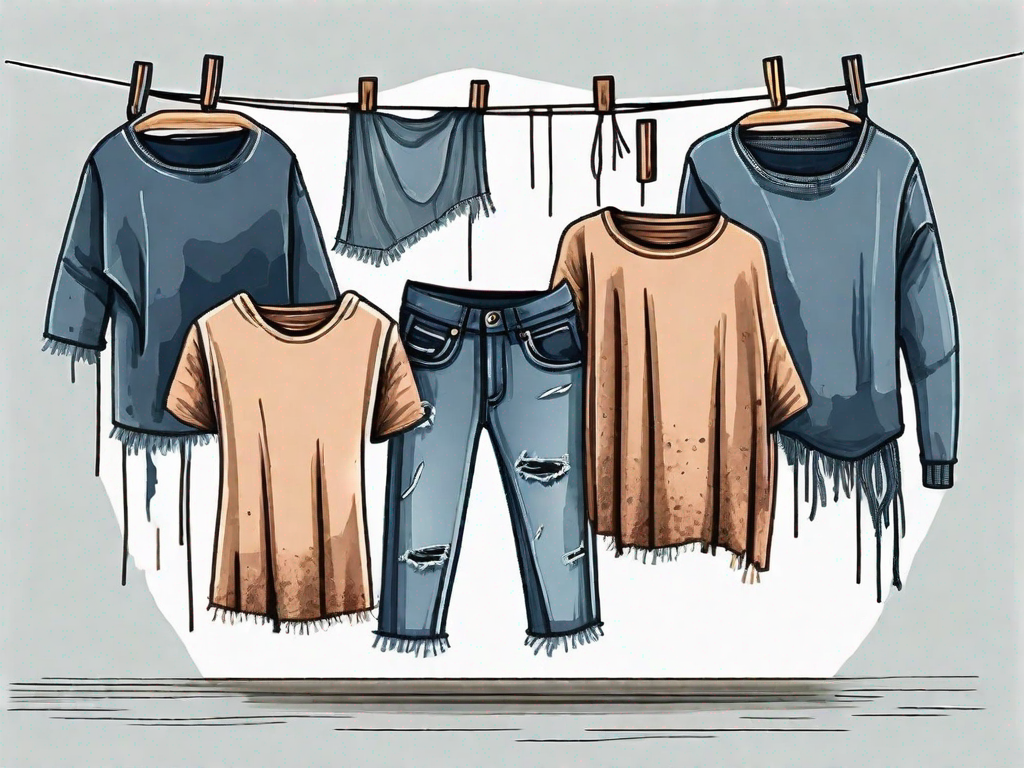
Distressed fashion might seem like throwing on your oldest, most worn-out clothes. But there’s actually more to it than meets the eye! It’s a carefully curated aesthetic that takes inspiration from pre-loved garments and imbues them with a sense of individuality and rebellion.
So, what exactly makes clothing “distressed” and how did this trend come about? Let’s go into rips, tears, and faded fabrics.
Looking “Worn Out”: Techniques of Distressed Fashion
Distressed fashion isn’t just about throwing on a pair of jeans with a hole in the knee. Here are some key techniques used to achieve that desired worn-in look:
-
Fading: This involves lightening specific areas of the fabric to mimic the natural fading that occurs over time with washing and sun exposure. Techniques used for fading include stone washing (washing clothes with pumice stones to create a worn look) and bleaching (applying bleach to targeted areas for a lighter effect).
-
Rips and tears: Distressed fashion strategically incorporates rips and tears in the fabric. These are carefully placed to add an edgy touch and can vary in size and severity, from small frays to dramatic gashes.
-
Fraying: The edges of hems, seams, and pockets are intentionally frayed to create a sense of wear and tear. This adds visual texture and a touch of rawness to the garment.
-
Acid Wash: A more advanced technique, acid washing involves treating the fabric with a diluted acid solution to create a faded and distressed effect with a unique marbled pattern.

A History of Rebellion
Distressed clothing traces back to the counterculture movements of the late 20th century, particularly punk and grunge. These subcultures embraced a DIY (do-it-yourself) approach to fashion, often taking ordinary clothes and distressing them to express their individuality and rebellion against mainstream trends.
-
Punk fashion (1970s-1980s): Punks challenged societal norms through their clothing, and distressed garments were a key part of their look. Ripped and safety-pinned clothing symbolized a rejection of conformity and a desire to make a bold statement.
-
Grunge fashion (1980s-1990s): Grunge embraced a sense of apathy and rebellion through oversized, ripped clothing. Frayed flannel shirts and ripped jeans became staples of the grunge aesthetic, reflecting a rejection of materialism and a focus on comfort over trends.
Beyond Rebellion
While distressed fashion originated as a symbol of rebellion, it has evolved over time. Today, it’s a mainstream fashion trend that can be incorporated into various styles.
-
High fashion embrace: Distressed clothing has found its way onto high-fashion runways, with designers reinterpreting the look with a touch of luxury. High-end brands might use premium fabrics with subtle distressing or create more dramatic rips and tears for a statement piece.
-
Style versatility: Distressed clothing can be dressed up or down depending on your personal style. Ripped jeans can be paired with a blazer for a casual-chic look, while a distressed leather jacket adds an edge to a feminine dress.
-
Gender fluidity: Distressed fashion transcends traditional gender norms. Ripped jeans, once seen as a more masculine style, are now a staple in both men’s and women’s wardrobes.

How to Rock Distressed Fashion with Confidence
Ready to incorporate distressed fashion into your wardrobe? Here are some tips:
-
Start subtle: If you’re new to distressed fashion, begin with pieces that have subtle distressing, like lightly faded jeans or a shirt with small frays.
-
Balance is key: Distressed clothing should be a statement piece, not the entire outfit. Pair ripped jeans with a more polished top, or balance a distressed jacket with a more tailored bottom.
-
Consider your body type: Distressed clothing can be flattering on all body types, but choosing pieces that complement your figure is important. For example, high-waisted ripped jeans can elongate your legs, while a distressed sweater can add volume to a slimmer frame.
-
Quality matters: While distressed clothing has a worn-in look, it shouldn’t look sloppy. Choose well-made garments with intentional distressing, not just clothes that are genuinely falling apart.
-
Confidence is key: The most important element of rocking distressed fashion is confidence. Own your look and wear it with pride!
Distressed fashion is more than just ripped jeans and faded t-shirts. It’s a creative process.
Check here for more fashion tips.
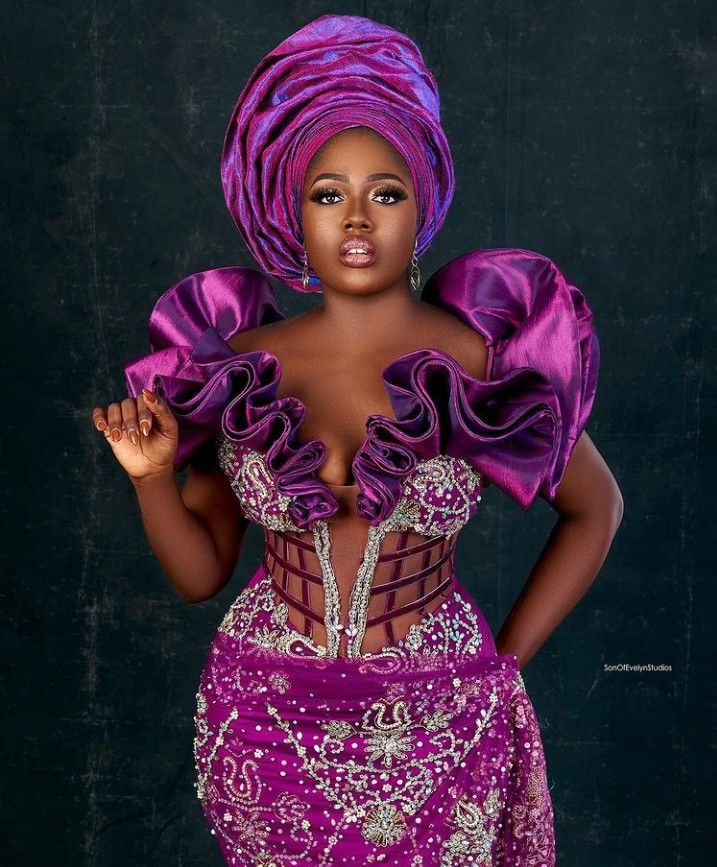
Lace is a timeless fabric that adds a touch of elegance and sophistication to any gown worn to a wedding. From classic silhouettes to modern twists, there are perfect lace gown styles to rock at a wedding.
Here’s a look at 10 of the hottest lace gown styles for the modern lady:
1. The simple corset
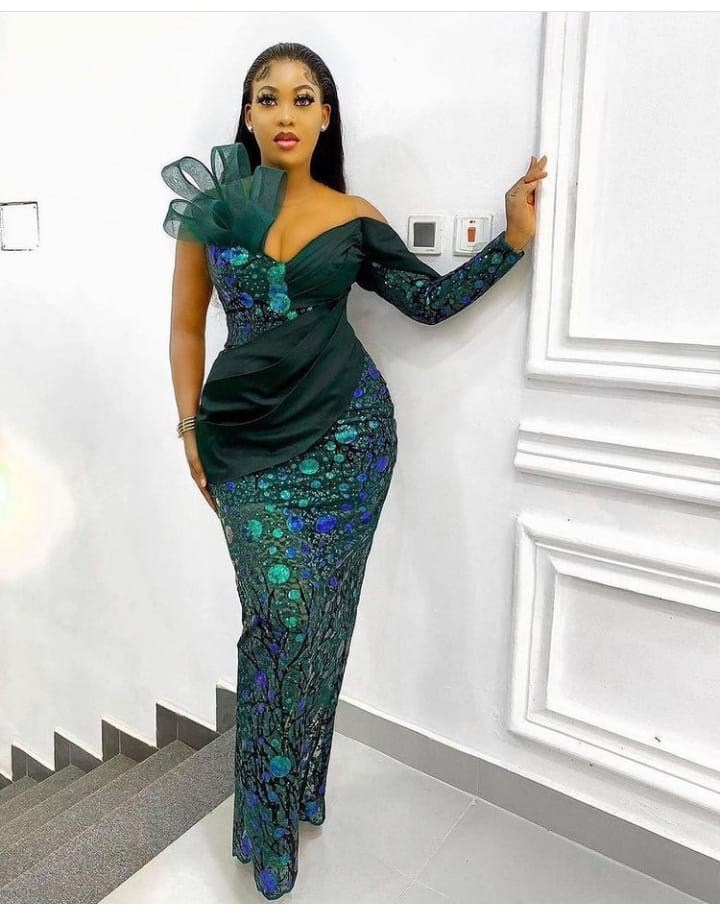
This style features a fitted bodice with a structured corset that defines the waist and creates a flattering silhouette. The lace can be delicate and floral or bolder with geometric patterns. This is a great choice for brides who want a timeless and elegant look.
2. The hidden corset

This gown offers the same figure-flattering benefits of a corset but with a more relaxed look. The corset structure is hidden beneath layers of beautiful lace, creating a smooth and seamless look. This style is perfect for ladies who want a touch of structure without feeling too constrained.
3. The draped bodice

This romantic style features a soft and flowing lace bodice that drapes beautifully over the curves. The lace can be cascading or gathered, adding a touch of whimsy and movement to the gown. This is a perfect choice for ladies who want a soft and ethereal look.
4. The constructive sleeve

Lace sleeves are a stunning way to add a touch of detail and drama to your wedding gown. Look for gowns with statement sleeves, like puffed sleeves, bell sleeves, or off-the-shoulder designs, all crafted from beautiful lace.
5. The corsetless dress with simple sleeves
This relaxed and comfortable style features a flowing silhouette without a corset. The lace adds a touch of texture and interest, while the simple sleeves keep the look clean and modern. This is perfect if you want a comfortable and effortless look at a wedding.
6. The beaded lace dress

Shimmer and shine on your wedding day with a stunning lace gown embellished with beads. The beads can be subtle and delicate or bold and dramatic, adding a touch of glamour to your look. Ladies who want a dress that truly sparkles should go for this style.
7. The high slit

Add a touch of modern sex appeal to your wedding gown with a high slit. This daring detail is perfectly balanced by the elegance of the lace fabric. If you want a show-stopping look that’s still sophisticated, go for this style.
8. The sleeveless corset
This glamorous style features a fitted bodice with a structured corset and no sleeves. The lace adds a touch of texture and interest, while the sleeveless design creates a sleek and sophisticated look. This is perfect for ladies who want a classic and timeless silhouette with a touch of modern edge.
9. The cut-out

Show a touch of skin with a strategically placed cut-out on your wedding gown. This daring detail adds a touch of modern flair to your look, while the lace keeps the overall feel elegant and sophisticated. Go for this style if you want a unique and unforgettable dress.
10. The jumpsuit

For the fashion-forward ladies, a lace jumpsuit is a bold and unconventional choice. This unique silhouette is both stylish and comfortable, perfect if you want to break away from tradition.
Remember, this is just a starting point! With so many amazing lace gowns available, the most important thing is to find a style that reflects your personal taste and makes you feel confident and beautiful. Don’t be afraid to try on different styles and silhouettes to find the perfect one for you.
For more fashion updates, check here.
Latest


New Album: KCee Releases Feat. Odumodublvck, Teni, Diamond Platnumz – ‘Mr. Versatile’
KCee has a new album called “Mr. Versatile“. This name shows that KCee is good at doing many different types...
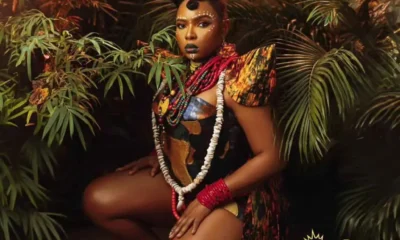

Yemi Alade Releases Her Sixth Album, ‘Rebel Queen’
Yemi Alade has just released a new album called “Rebel Queen“. She is a famous singer from Nigeria, known all...
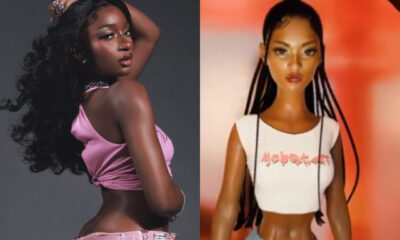

Ayra Starr Launches Doll Collection
Ayra Starr is a famous singer from Nigeria. She has become very popular in the music world. Many people like...
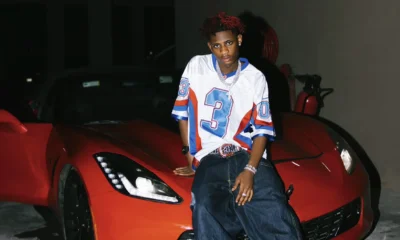

Musician Khaid Returns To Social Media After Protracted Illness; Unfollows All But Olamide
Khaid, a rising Nigerian music star, has recently returned to social media after a period of absence due to a...


Netflix Subscription Prices Increases In Nigeria For The 2nd Time This Year
Netflix has significantly increased its subscription fees for Nigerian users. This marks the second time the popular streaming platform has...


BBNaija 9: You Must Know These 4 Things Before The New Season Of Starts On Sunday
Africa’s most popular reality TV show, Big Brother Naija, is about to launch its ninth season (BBNaija 9) in a...


Burna Boy To Mark The 5th Anniversary Of ‘African Giant’ With YouTube Special
Burna Boy is a prominent African musician who has achieved global superstar status through his award-winning music and record-breaking concerts....


Babatunde Apalowo’s ‘Londoner’ Wins Best Fiction Feature Prize At Durban FilmMart
“Londoner” is an autobiographical film that tells the story of Ayo, a Nigerian bank manager who moves to London to...


Davido Partners With GAC Motors In Multi-Million Deal
David Adeleke, who is famously known as Davido, has entered into a new business agreement with GAC Motors, a well-known...


KCee Teases Release Of New Album, “Mr. Versatile”
KCee is a well-known Nigerian musician who has been making popular music for almost 20 years. He has managed to...
-Ad-




10 Reasons Why Working Out Is Good For You

New Music: BoyPee, Hyce & Brown Joel Feat. Davido – Ogechi

10 Lace Gown Styles To Steal The Show At A Wedding

Why Women Break Up With Men They Are Still In Love With

Shakira To Perform At 2024 Copa América Final On Sunday

My Wedding Dress Is The Most Comfortable Dress I’ve Ever Worn – Sharon Ooja Appreciates Designer Veekee James

Why ‘Isiagu’ Styles Are Becoming Norm At Igbo Ceremonies

Why Do Women Live Longer Than Men? See Reasons Behind The Longevity Gap

6 Ways To Stay Informed Without Sacrificing Your Mental Health

5 Things You Should Always Keep Private
Trending
-

 ARTS & CULTURE6 days ago
ARTS & CULTURE6 days ago5 Powerful Goddesses Who Answer Prayers In Nigerian Traditional Religions
-
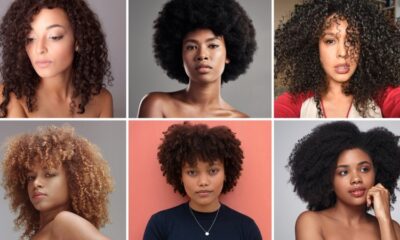
 BEAUTY5 days ago
BEAUTY5 days agoHair Care Tips For All Nigerian Hair Types
-
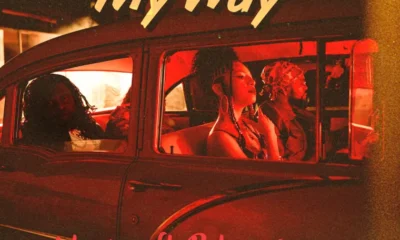
 FAB FRESH4 days ago
FAB FRESH4 days agoRising Artist Litovibes Features Patoranking In New Single, ‘My Way’
-
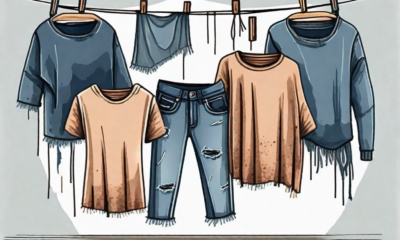
 FASHION6 days ago
FASHION6 days agoWhat Qualifies As Distressed Fashion?
-
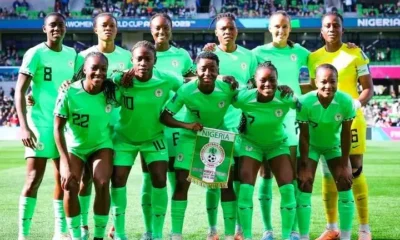
 SPORTS3 days ago
SPORTS3 days agoNigeria Vs Brazil: Time And Where To Watch The Super Falcons’ 1st 2024 Olympics Game
-
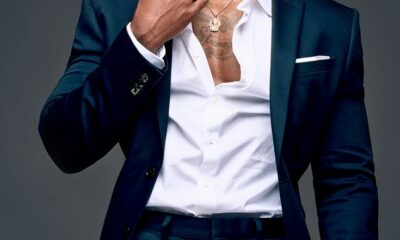
 FASHION6 days ago
FASHION6 days agoSuit Up & Stand Out: How To Wear A Head-Turning Suit In 2024
-

 HEALTHY LIVING5 days ago
HEALTHY LIVING5 days agoWhy Fibroids Come Back After Surgery
-

 OPINION5 days ago
OPINION5 days agoHow To Build Trust For A Stronger Relationship


